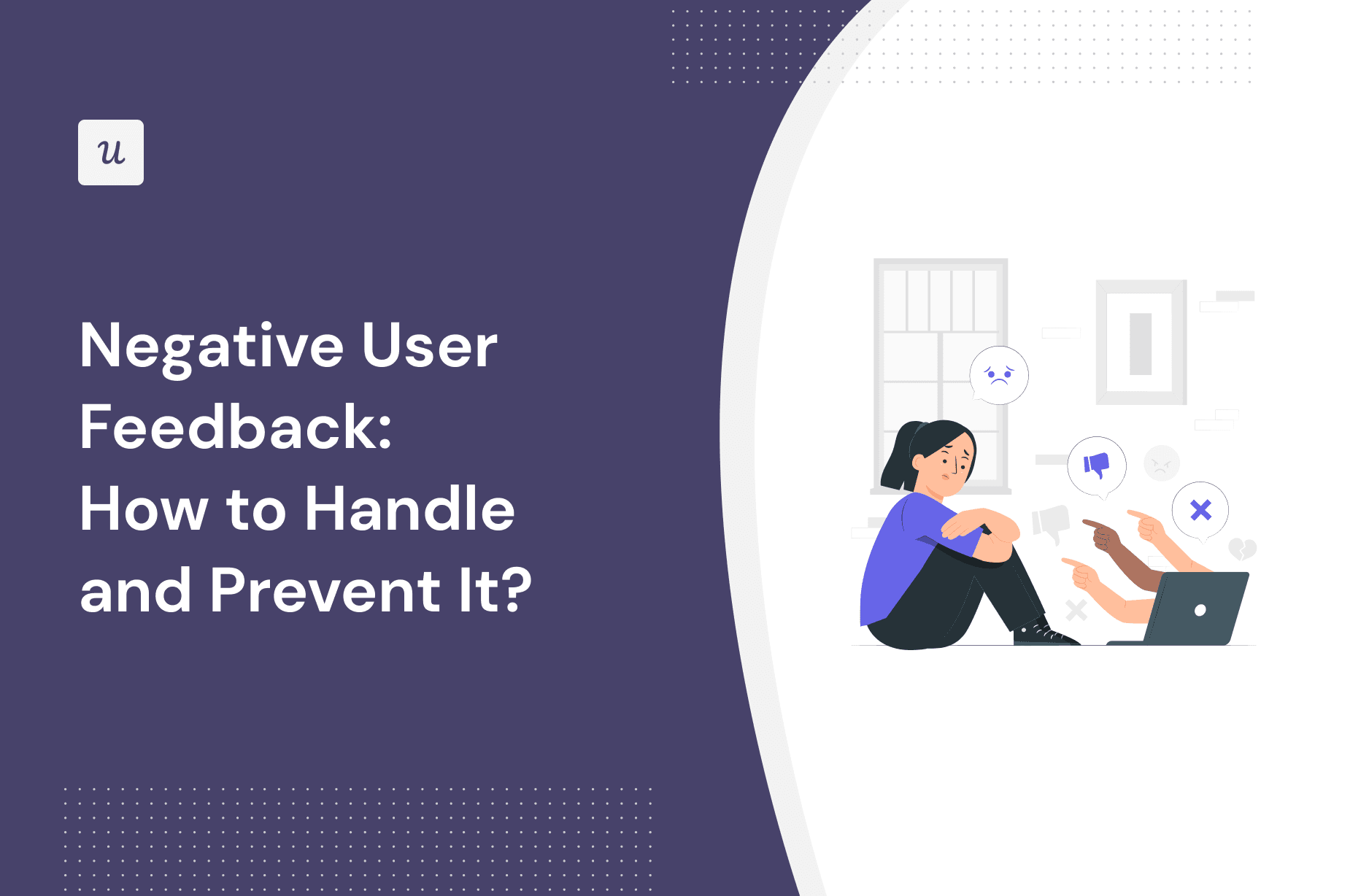
Receiving negative user feedback hurts. However, it isn’t necessarily bad news for your product.
How so?
That’s what the article explains.
Let’s check out how you can leverage negative customer feedback to improve the user experience and prevent it in the future.
Try Userpilot Now
See Why 1,000+ Teams Choose Userpilot

Summary of negative user feedback and how to prevent it
- Negative user feedback describes critical responses or comments indicating dissatisfaction with a product, often highlighting issues like poor usability or missing features.
- Common causes of negative feedback include performance issues, poor UX design, inadequate onboarding, unsatisfactory customer support, or pricing.
- Receiving negative feedback is crucial for product improvement and indicates users’ trust and engagement.
- Negative feedback can come from different sources, for example, customer feedback surveys, user testing interviews, review sites like G2, as well as social media and forums.
- When you receive negative feedback or reviews, respond quickly to show the customer you take their concerns seriously.
- Collecting comprehensive details about the feedback helps in understanding the full context and specifics of the issue.
- Investigating the root cause of the feedback enables you to address the core issues rather than just the symptoms.
- By keeping the customers in the loop about the progress and implemented solutions, you reinforce their trust and show commitment to improving their experience.
- Thorough and effective onboarding helps customers understand and use the product competently, reducing dissatisfaction.
- To pick up issues early and address them before they escalate, gather feedback from users regularly, and provide them with self-serve on-demand support resources.
- Tracking user interactions with the product can reveal friction points leading to frustration and help you identify solutions.
- Book the demo to see how Userpilot can help you minimize negative user feedback and deal with it when it happens. Book the demo!
What is negative user feedback?
Negative user feedback is the critical responses, reviews, or comments reflecting user dissatisfaction with the product.
Such feedback concerns the parts of the product that don’t work as they should or fail to satisfy user needs, like poor product usability or missing features.
What are some examples of negative feedback?
SaaS companies receive negative user feedback about various aspects of the customer experience.
Here are some examples:
- Performance and reliability issues – like bugs, slow loading times, or frequent downtimes
- Poor UI design – for instance, when the product is overly complex and not intuitive to navigate
- Badly designed user onboarding – for instance, being overloaded with lots of irrelevant information
- Inadequate customer support – when resolving issues isn’t straightforward, the response times are too long, or the support staff is unaccommodating
- Pricing – when the product isn’t good value for money or the pricing isn’t transparent
- Limited functionality – like lack of key features essential for users to achieve their goals
- Changes – as animals of habit, we don’t like them even if they’re ultimately for the better
Why receiving negative feedback isn’t such a bad thing?
Getting negative feedback isn’t great especially when you’ve put your heart and soul into building the product. I feel your pain!
But would you rather not know if your product sucks?
Of course not! Honest feedback is essential to improve your product and make the user experience even more satisfying.
There’s another reason why the lack of negative feedback is much worse than getting it:
If your users are giving you negative feedback, they show their trust – in your product and your ability to change things around. When they stop, it means you’ve lost them, for example, by not closing the feedback loop quickly enough and not addressing their needs or pain points.
Don’t let this happen. Embrace negative feedback and act on it!
Where to identify negative reviews?
Negative user feedback can come in different shapes and forms.
Here are a few of the most common ones for SaaS companies.
Customer feedback surveys
Email and In-app surveys are one possible source of feedback.
As a SaaS business, you most likely use NPS and CSAT surveys to track trends in user sentiment and satisfaction.
In-app surveys are also used to evaluate specific aspects of the product. For example, you can trigger them contextually when users engage with a new feature to measure their success.
Finally, it’s also a good practice to have a feedback widget that users can use to submit unsolicited feedback whenever they need to.
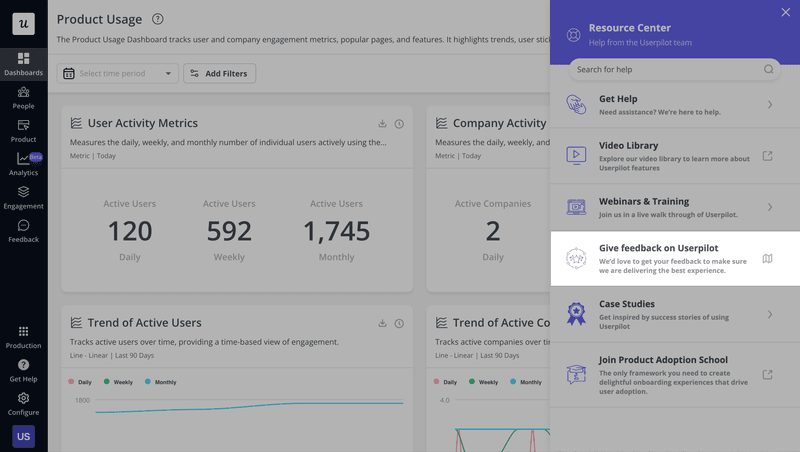
User testing
User testing is the process of evaluating a product by asking real users to interact with it and interviewing them when they finish.
When structured properly, such testing sessions can provide lots of (negative) insights into how users use and experience the software and identify any issues or challenges they face.
This is particularly valuable at the early stages of the product development process.
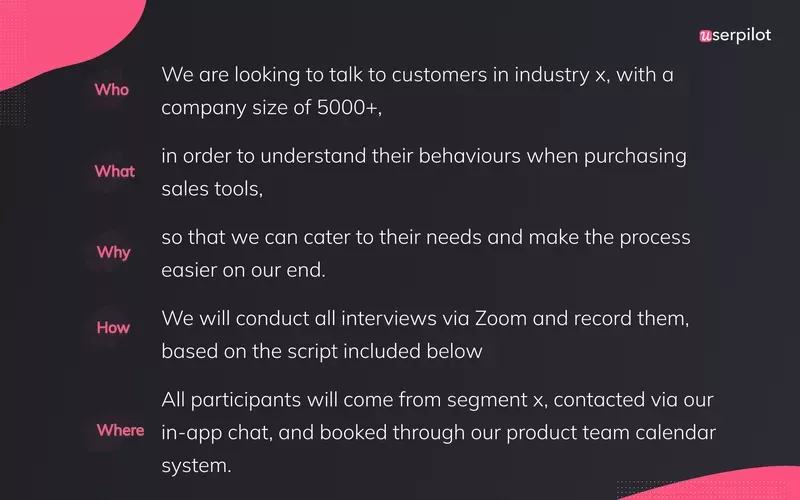
Review sites
While users may not always be willing to voice their negative opinions in direct feedback, they’re often keen to do it publicly on review sites like G2 or Capterra.
Make sure to monitor these regularly as that’s where potential customers often look before they choose a product.
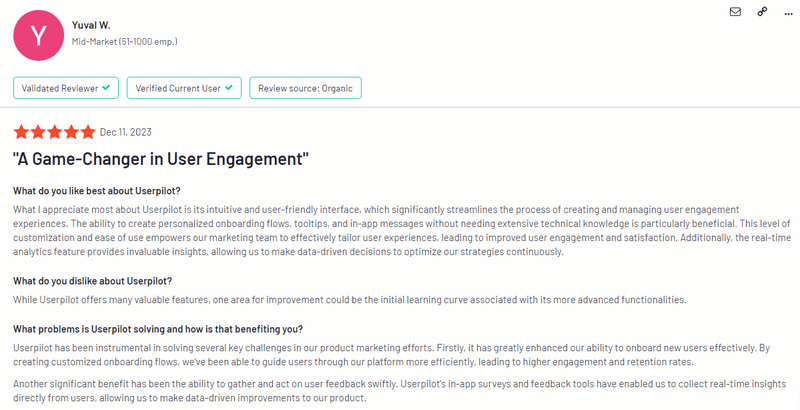
Social media
Social media platforms and forums are another venue where your customers may feel less shy to share negative feedback than directly with you.
And unlike on review sites, where you don’t need verification to express your views, there’s a risk that not all feedback there comes from real users.
Especially on Quora or Reddit, there are plenty of threads full of unrefined comments about various software tools.
But it doesn’t mean some of the feedback isn’t useful, so use social listening tools like Brand24 or Mention to track references to the product.
How to deal with negative user feedback and resolve customer issues?
Okay, so we agree that negative user feedback is great and we know where to look for it.
Let’s now have a look at how to act on it!
Promptly respond to the negative review
When you receive negative customer feedback or review, reply as soon as possible.
Politely apologize for the bad experience and offer the user an opportunity to discuss the issue further so that you can make up for it.
That’s even if you don’t agree with the feedback. Arguing with the customer or getting defensive (or offensive) is a big no-no even if their feedback seems unfair. This could cause irreparable damage to your reputation and discourage future customers.
If the feedback comes via different channels, for example, chat or phone, the same rules apply. Make sure your customer support or service team has a script for dealing with negative feedback. Frameworks like Starbucks’ LATTE or Mariott’s LEARN can help.
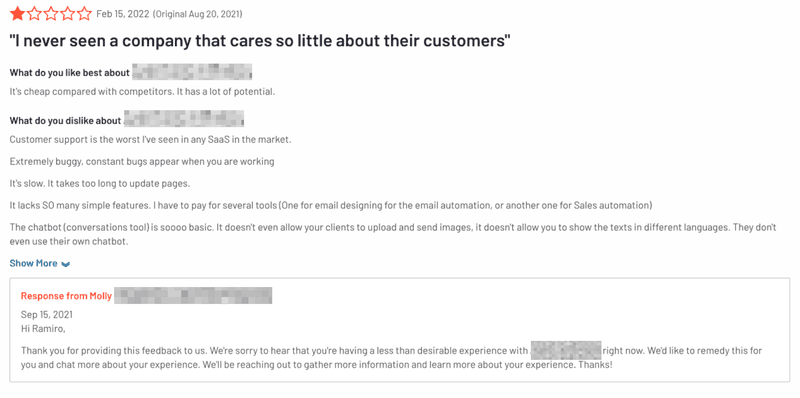
Gather detailed information on the feedback
As soon as you receive negative feedback, collect all related data to form a complete picture of the situation.
If the negative feedback came in an in-app survey, tag it with other similar responses and create a segment of users. Next, use product analytics to analyze their user behavior for trends and patterns.
For example, analyze the feature usage if users are complaining about limited functionality.
What if the feedback came from an external source, like a review or social media post?
Reach out to the person and invite them to take part in an interview so that you can collect more details about their bad experience.
Such data will help you to get to the bottom of the issue.
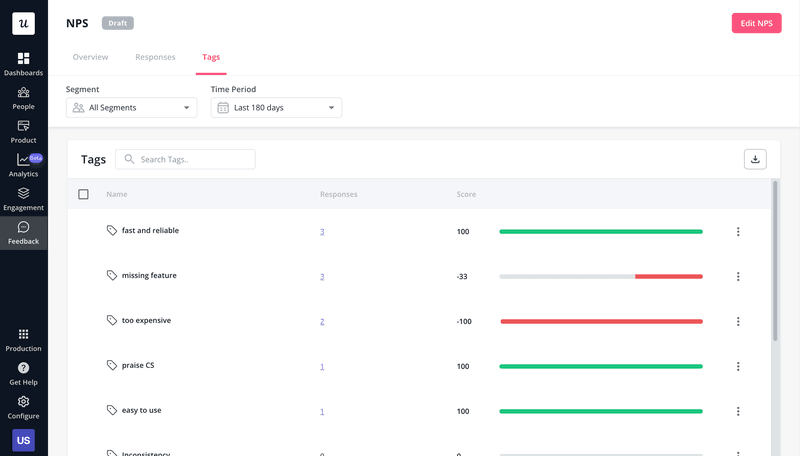
Perform a root cause analysis
Root cause analysis is a problem-solving technique that helps you find the underlying issues, not their symptoms. This is the only way to prevent problems from recurring in the future.
How do you go about it?
Based on the data collected before, develop hypotheses about what could be causing the issue. This could be external factors, like technological developments, or internal ones, like product updates.
For example, if the users complain about a lack of functionality a possible cause could be a competitor releasing a similar feature or inadequate onboarding that doesn’t help users discover the feature.
Next, use product analytics and run experiments to validate your hypothesis. If it’s true, ideate and prioritize potential solutions.
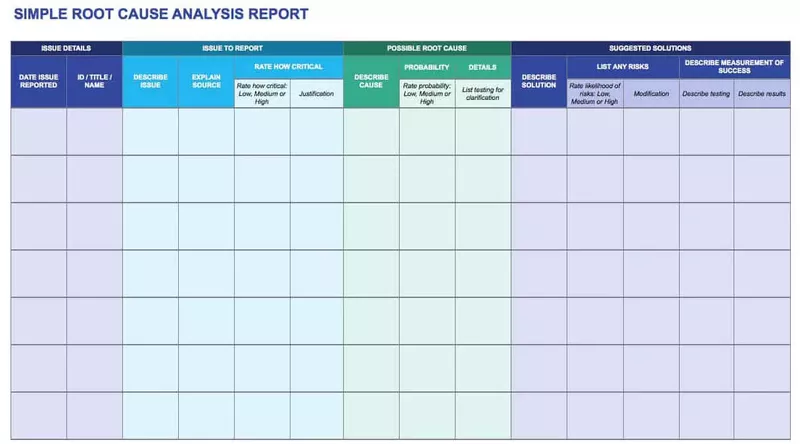
Implement the solution to settle customer complaints
The next step is implementing the solution.
This can be as simple as tweaking the onboarding flow by adding a few tooltips to aid feature discovery or as complex as rewriting a section of the code to get rid of bugs or updating your resource center modules to make them more informative and engaging.
Some of the fixes may take months, especially if there are more urgent items in the backlog.
Follow up and update the customer
As soon as you implement the changes, communicate with your customers right away.
For example, if they’ve requested new integrations that you’ve just added, create a modal announcing them. Make sure to mention that this was in response to user feedback as this will reinforce their loyalty.
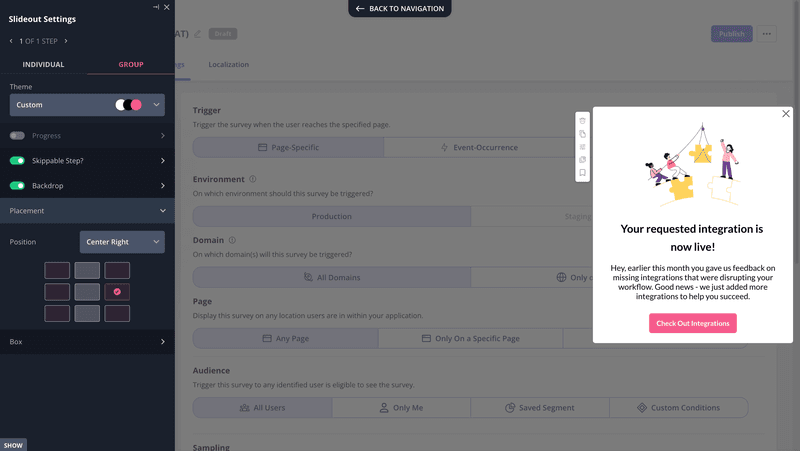
What if you can’t implement the solution immediately? If the problem requires a complex fix or there are more urgent items in the backlog, keep users informed. Reassure them you’re working to solve their problem and give them a rough estimate of when it may be ready.
Closing the feedback loop is also essential if you decide not to act on the user feedback. This could happen, for example, when a feature request isn’t aligned with your product vision.
Simply acknowledge you’ve received the feedback, considered it, and explain your position.
How to prevent negative feedback?
We’ve agreed that a lack of negative feedback may be a warning sign. However, it doesn’t need to be. If your growth metrics are going through the roof, it may just mean you’re delivering an outstanding user experience.
Here’s how to nail it and stop negative feedback!
Provide comprehensive onboarding at different customer journey stages
Onboarding helps new customers learn how to use the product to complete their tasks.
This starts as soon as they sign up for the product and continues through their user journey.
Initially, they may need only basic features, but as their competence grows, secondary onboarding keeps them engaged and helps them discover more advanced functionality to fully realize the product’s potential.
If your product satisfies user needs and they can competently use it to realize their goals, they are more likely to have positive experiences and leave positive reviews.
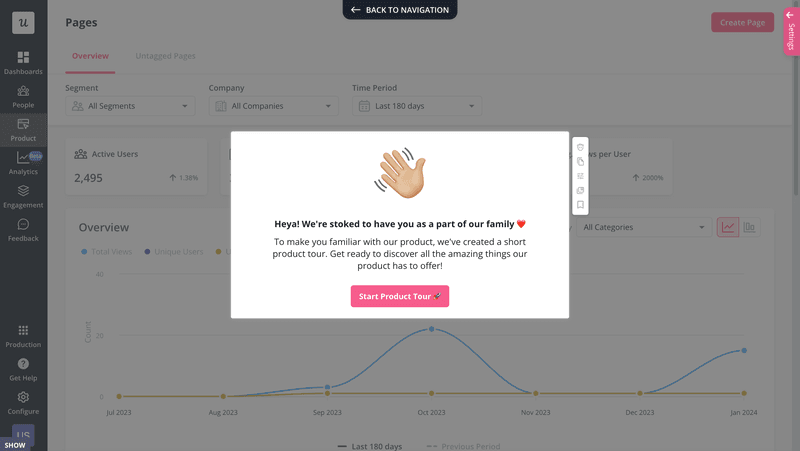
Regularly collect feedback to gauge customer satisfaction levels
Collecting user feedback regularly helps you pick up symptoms of dissatisfaction and identify opportunities to add value to the product.
It’s good practice to run NPS and CSAT surveys every 3-4 months.
Apart from the Likert scale quantitative questions, make sure to include open-ended ones to collect qualitative responses. That’s what helps gain a better understanding of how users are feeling about the product and why.
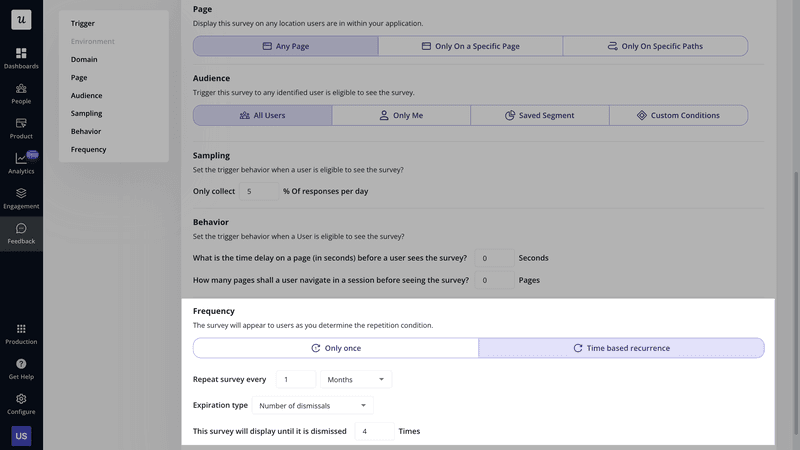
Provide proactive support to customers
Proactive customer support is a no-brainer when it comes to preventing negative feedback.
That’s because it nips issues in the bud before they spiral out of control.
Apart from user onboarding, you can achieve this by providing users access to a knowledge base with self-service support resources. These could be in the form of product documentation, how-to guides, video tutorials, or blog posts.
One of the main advantages of such resources is that they allow users to access assistance whenever they need to and without contacting customer support. That’s how increasingly more users prefer to get help.
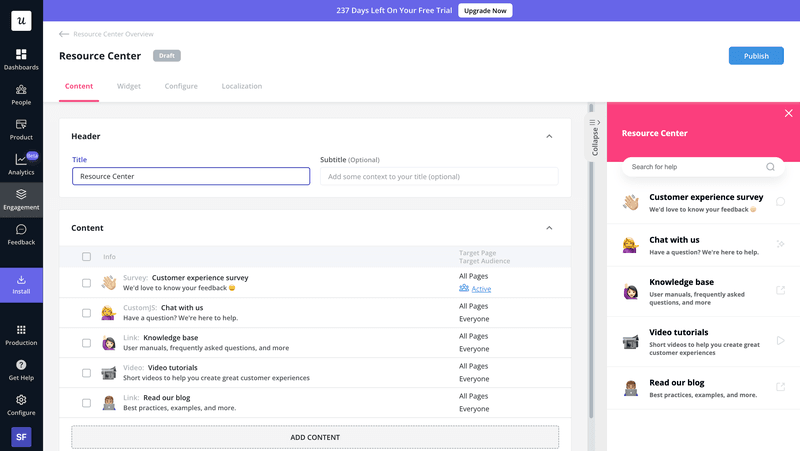
Monitor user behavior to identify areas of frustration
Product analytics are another reliable way to identify issues before they lead to devastating customer feedback.
That’s because, with modern analytics tools, you can record every single user interaction with the product.
For example, heatmaps or session recordings can reveal rage clicks which could be an indication that a customer isn’t having a great time and might complain. That’s if they don’t throw their device out of the window before.
It gets even better.
Analytics can also help you find the solution to the problem and then track its effectiveness.
For instance, you can analyze the paths of your power users inside the product and use the insights to design in-app guides that help other customers replicate it.
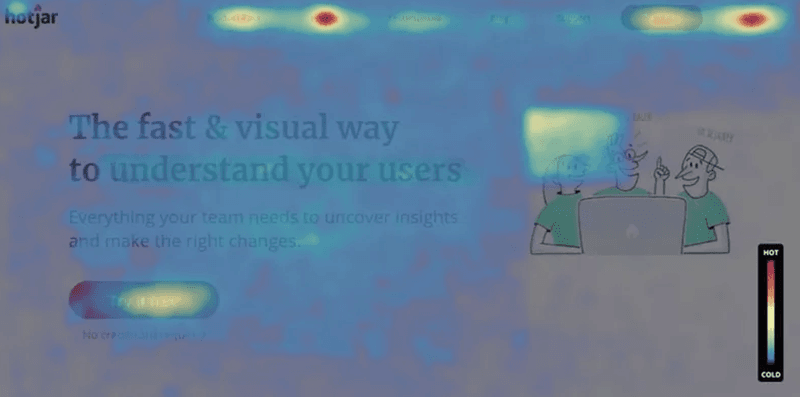
Conclusion
Everyone who’s ever received negative feedback knows how unpleasant it is.
However, negative feedback isn’t always bad, as it can tell you how to improve the customer experience. Negative feedback is also a manifestation of customer loyalty. Customers don’t do it to vent their frustration (maybe a little bit) but to help you improve the product.
If you’d like to learn how Userpilot can help you collect user feedback, identify root causes of negative feedback, and prevent it with onboarding and in-app support, book the demo!








